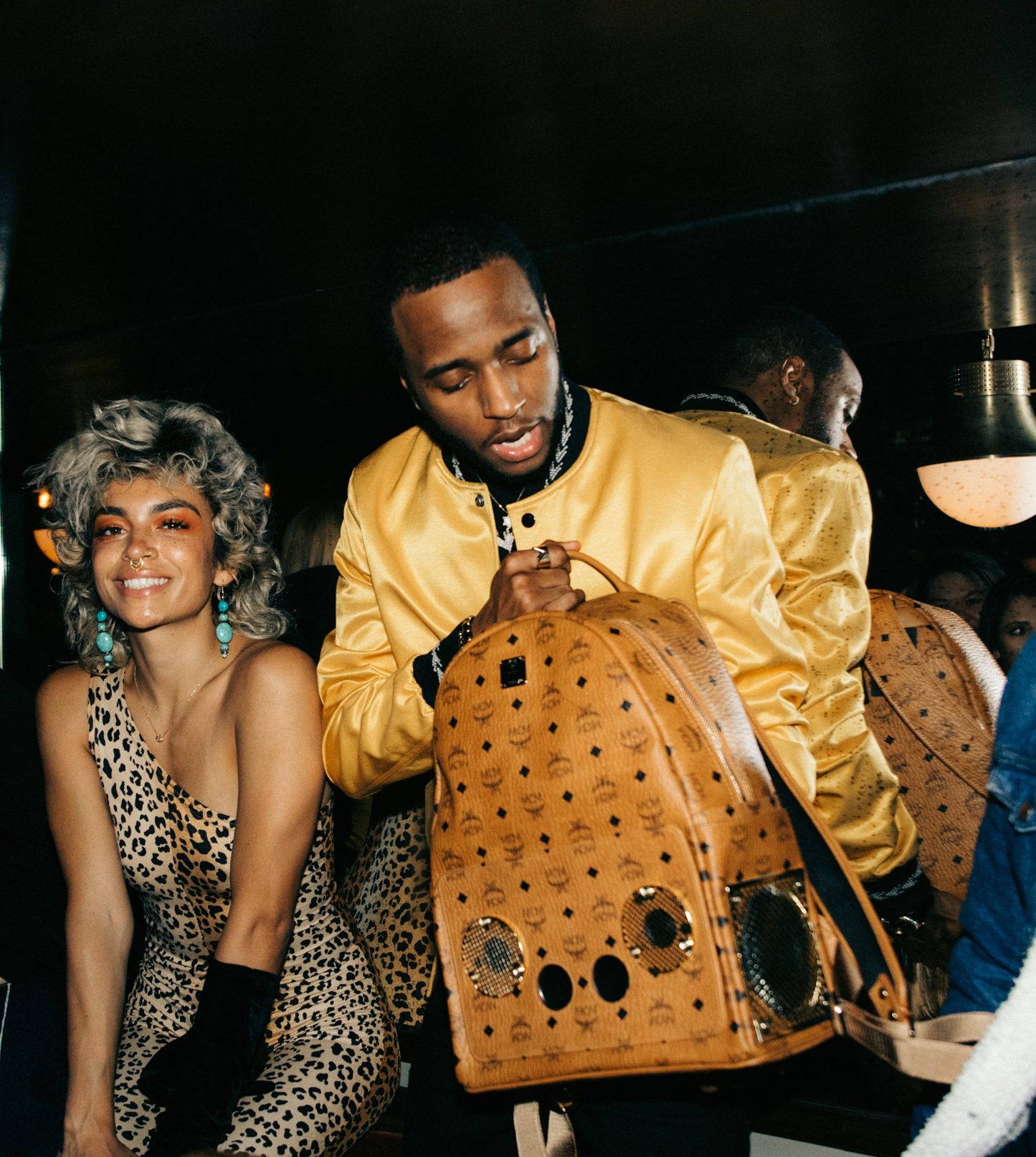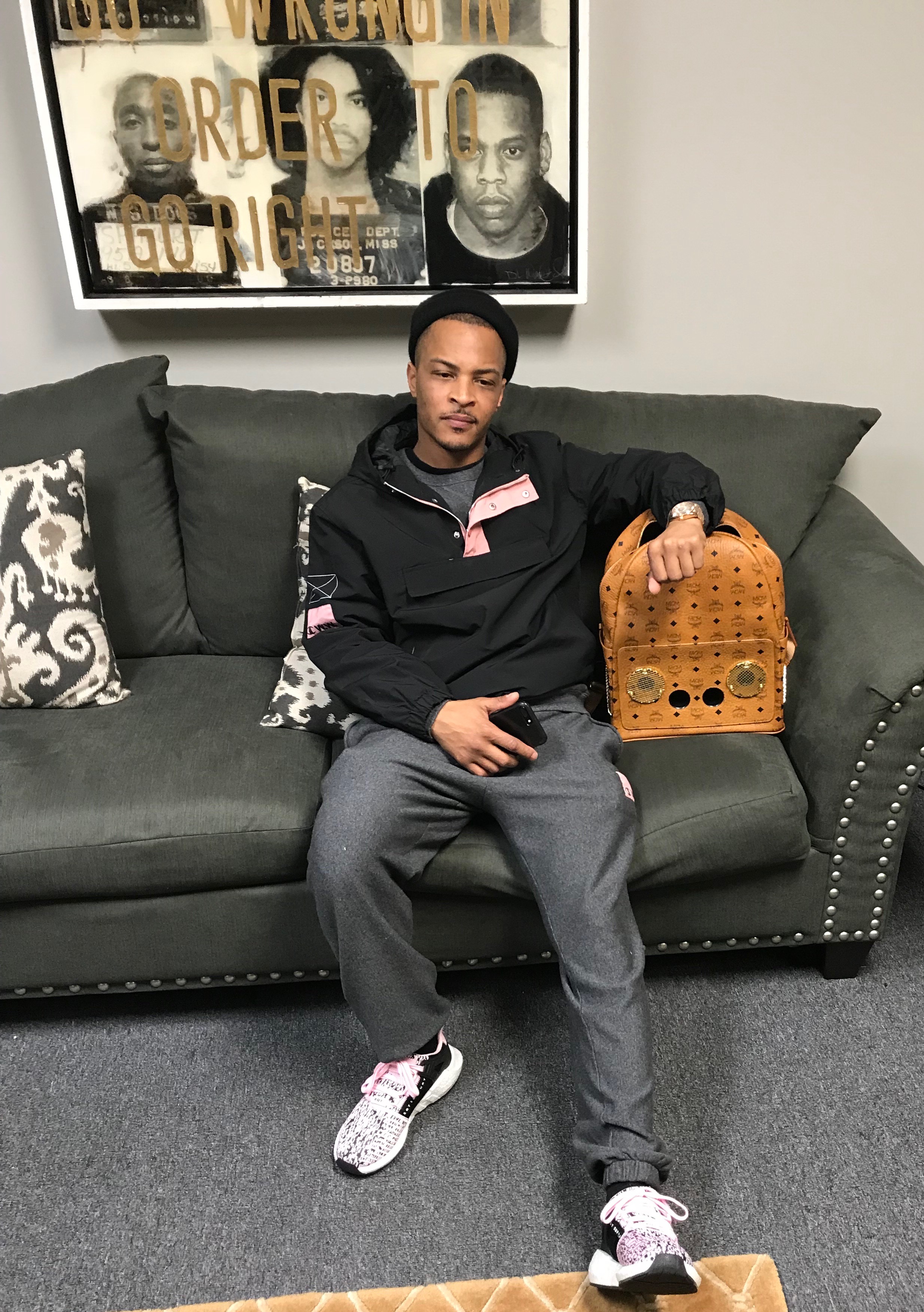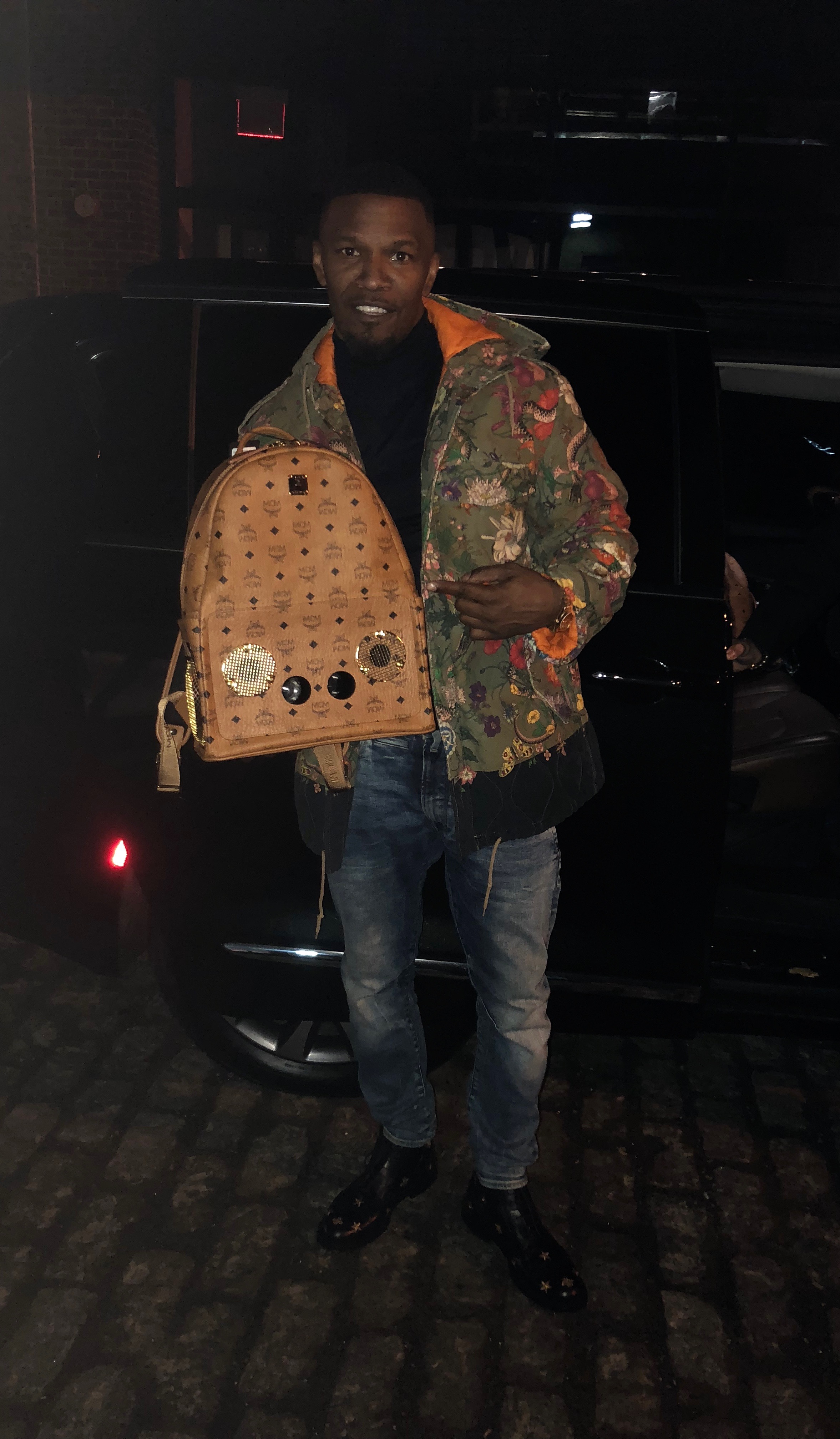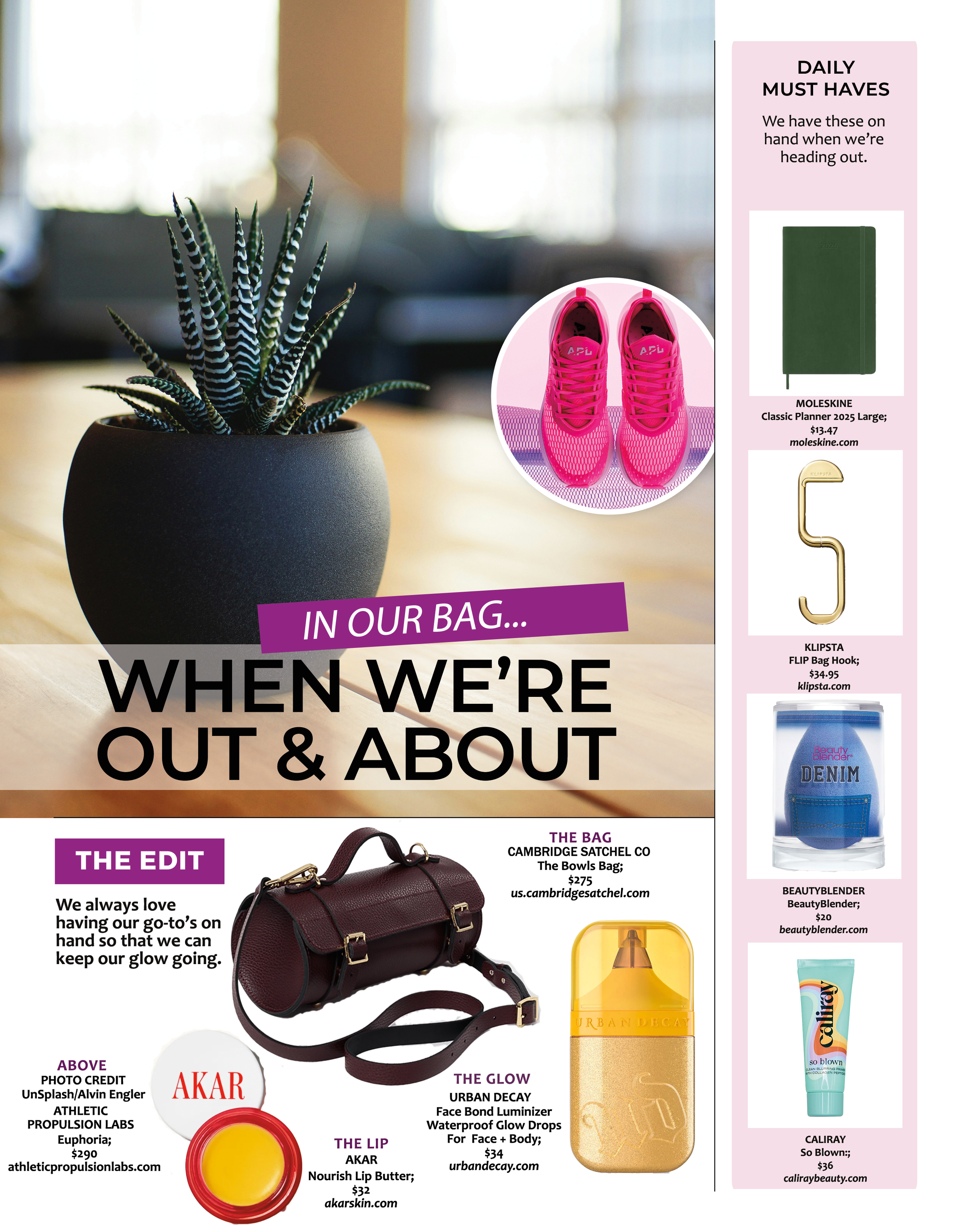#TRIBEGOALS
Read the Nov Issue of Athleisure Mag and see #TRIBEGOALS in mag.
#TRIBEGOALS
Read the October Issue of Athleisure Mag and see #TRIBEGOALS in mag.
#TRIBEGOALS
Read the June Issue of Athleisure Mag and see #TRIBEGOALS in mag.
THE PICK ME UP
Read the June issue of Athleisure Mag and see The Pick Me Up in mag.
THE PICK ME UP
Read the May Issue of Athleisure Mag and see The Pick Me Up in mag.
#TRIBEGOALS
Read more from the March Issue of Athleisure Mag and see #TRIBEGOALS in mag.
BECOME CYBER SMART TODAY!
BY PAUL FARKAS, TECH DIRECTOR
We live in a world where cyber threats are all around us in our business, personal and family lives. It is integral to gain knowledge and take action on how to have better habits and get with protection from safeguard third-party solutions. We found a recent industry panel session hosted by Chubb, "Becoming Cyber Smart at Home, Work and Wherever Life Takes You," to be super-informative and recommend looking at these topics, themes and steps to get your digital lives in top shape!
The panel comprised of cyber industry experts from Chubb, ADT, Carnegie Mellon University and CyberScout, and outlined a range of cyber threats facing individuals and small businesses in today's connected world. It describes real-life examples and anecdotes in bite-size answers, and offers some best practices for individuals and businesses for keeping their personal information safe against some of today's biggest cyber risks.
The session delivered an insightful discussion about cybersecurity and its impact on our personal and professional lives by demystifying cyberthreats as well as highlighting practical protections that can be implemented by anyone.
Patrick Thielen, Senior Vice President, Cyber and Technology Product Lead in North America for Chubb, led the panel discussion. “To frame the risk facing consumers, global economic costs of cybercrime are rising into the trillions of dollars annually, and a large portion of that falls squarely on the shoulders of consumers. Since 2005, there have been over 8000 reported data breaches of businesses, in which over ten billion consumer records have been stolen. As of today, 64% of American adults have been victimized by at least one of these
breaches and most multiple times.. The average email user today has over 130 online accounts and we have more and more internet connected devices in our homes. It is not surprising that according to the 2018 Chubb Cyber Survey focusing specifically on individuals, 86% report being concerned about a cyber breach, yet only a small percentage were taking basic precautions to guide against them.”
In fact, 8 in 10 people experience or know someone affected by cybercrime per the noted US Results, 2017 Norton Cyber Security Insights Report. Incredibly, cyber attacks were found to be happening every 39 seconds by a referenced study by The James A. Clark School of Engineering at University of Maryland.
Summer Craze Fowler, Technical Director of Cybersecurity Risk and Resilience at Carnegie Mellon, is responsible for a team and portfolio of work focused on improving the security and resilience of the nation's critical infrastructure and assets. “Businesses of all sizes are targets for these data breaches as they hold so much information and data, not only about consumers, but also about their employees,” she noted. “Typically when we think about these data breaches, we think about credit card fraud, but it has extended well beyond.. we’re looking at lately W-2 fraud and health insurance fraud,” raising that W-2 phishing is up 870%, where tax returns are being filed on behalf of employees and diverting those funds to the bad actors. “Your health insurance information can be used by others getting care and pretending
to be you.”
The session was well-supported by studies and figures. 27% of data breaches in 2017 were medical or healthcare related per the claims data from the Identity Theft Resource Center. A whopping 24% of all Chubb cyber claims are healthcare related.
Adam Levin, Chairman and Founder of CyberScout and author of the critically acclaimed book, Swiped: How to Protect Yourself in a World Full of Scammers, Phishers and Identity, made some excellent points for business and consumer to note and act upon. “The reality
with the ID theft problem.. is this data can use you as the credentialed person to get into your business network, where they can put malware on the computers of your business; they can steal information involving W-2s; create situations where they do wire transfer fraud; they can steal intellectual property and trade secrets. It isn’t you for you, but as a conduit of all of the other things. The biggest thing they do is phishing attacks, they do drive-by attacks, they find ways to get malware on your computer and do keystroke attacks, ransomware and then they also get into information about kids.” He shared some appalling scenarios, like child-related identity theft, where the scheme can be as long as a 15-17 year run, because kids’ credit isn’t often checked, and often times it is a person in the home as a relative to set up a separate life right under their nose across the table.
Michael Keen, Vice President, ADT Cybersecurity, chimed in, “[a]n additional threat vector is the home network, like a home router.. there are countless folks that have the same passwords or administrative access to those devices and the same firmware when the device
was issued. Compared to all of the threats out there, you have to look at what’s keeping against threats created yesterday to protect us today. And so the motivation of criminals that
attack the home has also extended to the Internet of Things (IOT) devices. In 2017, the average number of internet-connected devices connected to the home was around 13.. talking
about (connected) light bulb, a thermotstat, a lock, a baby camera, a refrigerator, television, and in terms of motivation, frankly it pays.” He added, “Cybercriminals will always take the
path of least resistance” and gave low cost IOT devices as an example, where the ability to put additional layers of security, firmware updates and testing is nowhere near physical security installed by professionals. The strength of your network is dependent on the
weakest devices in your network. It is either focused on things like denial of service attacks or can even be used to mine cryptocurrency using your network’s power to mine Bitcoin.”
Indeed, studies show costly ransomware is on the rise. Per the Symantec 2018 Internet Security Threat Report (ISTR), the average cost of ransomware per attack is $533.
Ms. Fowler continued by pointing to the fact that people need to be practicing good cyber hygiene. “Often times we are offering up the information, like internet quizzes where the data we put online is used by nefarious purposes. Phishing, vishing (voice), smishing (sms) are prevalent and even videos on online dating sites are also being used for ransomware.”
“Unfortunately we are not going to be able to prevent this anymore,” Mr. Levin regrettably noted. “We have hundreds of millions of social security numbers out there due to breaches for many years. Cyberwar has replaced the cold war that we face-off everyday against state-sponsored hackers, for-profit hackers, cause hackers and basement hackers. We have to adopt entirely new paradigm as to how we think about it.” Mr Levin has coined and developed the 3M’s for the industry where “we boil it down to three M's -- minimize, monitor and manage," said Mr. Levin. "It is about minimizing your risk of exposure through adopting best practices, monitoring your accounts effectively and comprehensively, and managing any damage, such as ID theft or stolen accounts that might occur." He elaborated that it was about “minimizing the risk of exposure or reducing your attackable surface; effectively monitoring, and planning for and monitoring the damage.” He said, “it’s not about the technology, it is about creating and following a culture and following it for businesses and
consumers.” Some solid advises Mr. Levin gave were: using strong passwords or getting a password manager; enabling 2-factor identification; creatively changing memorable answers
to security questions; staying away from public wi-fi and using VPN for better protection; updating and backing-up your data; shredding; freezing credit; changing default passwords of
IOT devices; checking and being mindful of credit scores and signing up for transactional monitoring alerts; thinking of more sophisticated monitoring programs; and looking at explanations of health insurer benefits where there are multiple charges due to fraud.
“The culture of security and acting on things today is very important,” Mr. Keen added. “A variety of different service partners can provide installations of hardened security equipment, like how a network is setup.” He gave examples of considering implementing guest wi-fi that can be configured on your behalf, and staying on top of security patches and firmware updates, as well as monitoring – all which are readily available services and solutions by providers.
Ms. Fowler highlighted that it is also a culture of resiliency, “where the internet is a part of our lives and we need to exercise resiliency.. and have a response plan.” Some questions to think
about are, “who would you call as a family as victims of a breach; whether you have an attorney ready with something more serious, like physical attempts and ransomware, and also
knowing how to access financial institutions with bigger problems and whether people have and test backups to make sure they work. She noted that when going away on travel, it is good practice to have other ways to access funds than a primary credit card as a backup plan. “Basic hygiene includes having a response plan,” she stated.
“The 3rd M is manage the damage,” Mr. Levin pointed out. “It really has to do with knowing who to call and knowing what to do. In a business you would create a breach response plan,
game this plan, and know you would have to respond urgently, transparently and empathetically. As a consumer, many institutions have programs available either to policy holders, account holders or employees, so (they can) check with insurance agents, financial
services organization, and HR departments and find out how to be part and the cost is one of the cheapest investments you can make versus the agony and financial loss you can have,” he
warned.
Mr. Keen agreed, “be partial to action, these suggestions are easy and free or inexpensive if implemented today. Think of the prevalent use of mobile phones and whether security has
changed to meet those demands.”
“Technology is moving at breathtaking pace and families should discuss with children and elderly and monitor use online. Often adversaries are coming with sense of urgency, if too good to be true, it likely is, either with big discounts and savings or fear of quick force like threats of governments coming to your home. Take a breath and think about things before doing things that could open you up and expose you,” Ms. Fowler noted.
In response to one of the audience questions, Mr. Levin creatively added, “when you say the word portfolio, the Pavlovian response of most people is investments - but the truth is we also have other portfolios in our lives – we have our credit and our identity, and have to be professional managers, because business, governments, and truthfully, consumers have not done enough, there needs to be a shared responsibility of cooperation, collaboration and communication… It is incumbent upon us to help one another. The AthleisureMag.com extra step is sometimes the harder step to understand the threats and extra things to do to protect yourself, and look to trusted institutions with relationships to get assistance. Be bold, ask and when there is some assistance take it.”
Answering another query to the panel, Ms. Fowler alluded, “from a business standpoint, they need to be cognizant of what they bring into their environment. It is really critical to understand what assets you have inside - people, technology, the facilities themselves – it is a prioritization process.”
Mr. Levin added another array of things to target optimizing for business: 2 factor identification; training; segmenting data as need to use and need to know; mapping data to be readied for incidents; aggressive vulnerability analysis and patch programs, and more. He
forewarned we “have to assume there is going to be an incident. A defining moment can be how a breach is handled. In the future, regulators, class action attorneys and the public will judge businesses on how well they protected the data and how well did they respond for customers, employees and business partners.”
Indeed, within the last few years, there are several products in the market that will offer cyber protection for individuals stated Mr. Thielen. “There are policies that cover financial fraud,
extortion and ransomware, privacy breaches, cyberbullying and other disruption victimization. Incident response coaches will have steps of what to do and facilitate,” noting they should be contacted in the first steps.
Adding layers of redundancy to make a security culture was also stressed by Mr. Keen. “Victimized business owners may face obligations from rules and regulations to notify customers or partners that could lead to loss of revenue, so it makes a lot of sense to mitigate risk through policies. Cyberthreats are evolving constantly, the latest stat is 250,000+ strands of malware are created daily, so if you are not evolving at an equal pace you are continuing to be left at risk. The reason why there is so much cybercrime is because it is easy and because it pays.”
Mr Levin underscored that “the truth is technology makes us powerful, but it also makes us vulnerable. When convenience trumps security, there are issues. And we know as technology
evolves, the protection tends to catch up and there are responses to the flaws and issues, the bad guys find a work-around, because there is more money on the dark side, and so we need to work together and find new ways to do this and find ways to better accurately authenticate people. Especially for businesses, we have to move toward privacy by design and security
by design, and can't be a bolt on - they have to be a core of things from day one. IOT devices should not be allowed to be connected to the internet until a new password is entered to work, so devices can be updated and upgraded automatically.”
“As businesses, the threat is evolving everyday,” concurred Ms. Fowler, “but we are really worried about the impact, be it from a cyberattack or a natural disaster, so it is very important for businesses to think about what is it that is most important for the operations of this business, and then make sure they have the right protections around those things most critical and more broadly than cyber - being resilient to accomplish its most important
objectives. For personal, we look at kids and monitoring what is online and think about what is most important and build protections around that.”
THE EIGHT BEST
Read more from the Aug Issue of Athleisure Mag and see The Eight Best in mag.
SMARTER CITIES
BY PAUL FARKAS, TECH DIRECTOR
We joined The Boston Globe at host Wayfair HQ in Boston for its "Smarter City, Smarter Skills" panel discussion on how the innovation economy is reshaping our world. The event was sponsored by Iron Mountain, and the Rockefeller Foundation, with Knowledge Partner, McKinsey & Company, and moderated by Shirley Leung, Columnist, The Boston Globe, and Matt Viser, Deputy Washington Bureau Chief, The Boston Globe.
The day started with a brief message from Boston’s Mayor Marty Walsh on asking questions needed to understand the impact of technology on workforce.
McKinsey’s John Means gave a presentation on his co-authored MGI report: "Smart Cities – Digital Solutions to a More Livable Future." His report found we are in a new era of smart cities, moving past the hype and criticisms, and turning to look toward the future where improving quality of life and outcomes for citizens will be the focus in addition to the applications and technology. Key is deploying digital technologies with impact directly on the citizen and public issues to capture the benefits of smart cities, while being mindful of the effects of its implementation. The report also measured the infrastructure and application layers across 50 cities from every element of a citizen’s experience of a city; including energy, mobility, water, waste, safety, community engagement, security, health, and economic development and housing. Interconnection of applications and technologies and their impact was stressed to meet opportunities of higher levels of citizen engagement. He gave some core takeaway highlights, namely that cities should - look how our new infrastructure investments could embed smart city technology for the potential of connected sensors and autonomous vehicles; move toward openness in data and partnerships; invest in civic tech-savvy leaders for cross agency and sector cooperation; and become more cyber-savvy with understanding the implications of security and privacy disruption in our communities. It was found that even the most advanced cities still have a long way to go.
Joseph Aoun, President of Northeastern University, said "[It is] projected up to 50% of the jobs are going to disappear in the next 20 years.. at the same time we are projecting new jobs will be created, and frankly no one knows whether the new jobs that will be created will compensate the ones that will disappear. Inequalities are going to increase unless we step in. Historically, education had been the equalizer giving opportunity for people, to first educate themselves and afterwards to continuously re-tool." He recommends society become robot-proof, including mastering humanics in college, including technological, data and human literacies. Please see Mr. Aoun’s book, Robot Proof: Higher Education in the Age of Artificial Intelligence.
Niraj Shah, CEO of Wayfair, stated, "The types of skills you need for the future are not necessarily the ones in the past.. We think STEM education should be part of a basic curriculum. A skill sought after by many companies is data science, we have a bootcamp that addresses a gap out there."
"We have a planet-scale reskilling effort on our hands," Anant Agarwal said, a professor at the MIT and founder of edX MicroMasters programs, a series of online courses featuring graduate-level training in specialized technical fields (~$1,000 a course, counted as credit toward graduate degrees).
U.S. Representative Ro Khanna (D - California) pointed out, "It shouldn’t be 'Move Fast and Break Things,' It should be ‘Move Fast and Build Things,'" urging that there should be a Moore’s Law for job creation.
Susan Crawford stated innovation can be thought as of a set of recipes - new ways of making a living, new ways of creating competitive industries – that require some basic materials that the US Federal Government has historically been very brave at providing; namely basic infrastructure, funding basic science research and setting standards that unleash innovation for everyone else.
Seattle’s Mayor Jenny Durkan noted, "The net is the highway of this current time and if it isn’t equitable and accessible for all the economy won’t be accessible for all.. we have to be balancing innovation with thoughtfulness" in preparing for the consequences of the future of work.
"This effort has to start early-on, in pre-school.. the traditional model of twelve years of school is not the way to go.. [I]t is important to re-evaluate it.. there are schools that are starting to teach for mastery," said Mayor Yvonne Spicer of Framingham, Massachusetts. She noted many kids of color are not getting or are afraid of getting STEM because they think it is for bright or white kids.
"Disruption is a very good thing, and deregulation isn’t necessarily a bad thing.. Even as disrupting,.. you can’t leave behind your old values," Senator Ed Markey (D - Massachusetts) summarized.
PHOTOGRAPHY | Athleisure Mag
Read more from the July Issue of Athleisure Mag and see Smarter Cities in mag.
#TRIBEGOALS
Read more from the April Issue and see #TribeGoals in mag.
SHOT AT Sky Residences | PHOTOGRAPHY Paul Farkas | STYLIST Kimmie Smith | GROOMER Felicia Graham | CELEBRITY COVER CNBC's Squawk Alley Co-Host Jon Fortt
COVER + THIS IMAGE | ROBERT GRAHAM Blazer + Woven | REISS Pant |
TECH REALITY CHECK WITH JON FORTT
This month's cover is graced by another one of our faves, CNBC's Jon Fortt who we see everyday as Co-host of Squawk Alley where, he shares his insight on what's going on with startups as well as tech companies. In addition to rocking an array of menswear that is transitional winter/spring style, he shares with us how he got into the industry from journalism to broadcasting, his approach to his work and more.
ATHLEISURE MAG: Tell us your background and how you got into broadcasting and ultimately to CNBC?
JON FORTT: I’m kind of an accidental broadcast guy. It was never a big goal of mine to get on TV. I actually started out working for newspapers as a print reporter. There was a national newspaper chain called Knight Ridder and they had this amazing scholarship for aspiring journalists and media businesspeople from ethnic minority groups. Every year, they’d pick four high school students to win a financial award, and more important, summer internships during college. Unfortunately, Knight Ridder doesn’t exist anymore, and there aren’t enough programs like the one they had.
Anyway, I worked for a Knight Ridder paper called the Lexington Herald-Leader after college, then got a job in Silicon Valley at the San Jose Mercury News just before the dot-com bust. I eventually made the move to magazines, editing at Time Inc.’s Business 2.0 and writing for Fortune. That’s where CNBC found me. They’d have me on every now and then to talk about Apple, which had become my specialty. Back in 2010, they decided they wanted to take a chance on a new correspondent, and fortunately, I was it.
AM: We know that you enjoy talking about tech companies, startups, products and services. What is it about technology that makes you so passionate and do you have a specific topic within it that you really enjoy focusing on?
JF: That’s a cool question, because I don’t think anyone’s asked me in that way before. It’s a little bit of an accident of timing that I’m into technology, I think. I got out of high school in 1994, the same year the web browser was born, and I think that has a lot to do with it. I got to the college newspaper and we were suddenly facing this question of what we were going to do about the web. Some of us started learning HTML, and built the first website for the paper. (I don’t think I had much to do with the final product, but it was fun to learn.) Not long after that, the paper got its first digital camera, which was seriously high-tech back then. It could only shoot black-and-white photos, and the resolution was really bad, but it was about 10 times faster to get a photo shot and processed compared to the darkroom. It became clear pretty quickly that technology was going to be the edge I would need in my career to get things done faster and at higher quality. That’s what I like covering most, I guess – the way seemingly small ideas can completely change the way we get things done.
AM: When we're watching CNBC, you talk about a range of companies and startups - and you have a fresh and fair approach to present it to those of varying levels of understanding - how important is it to make these topics relatable to a wide, as well as a niche audience?
JF: Maybe it’s the writer in me, and maybe it’s the time I spent doing tech reviews. I try to remember that there’s no excuse for making the audience feel dumb. Our audience is smart, but a big portion of our viewers aren’t into all of the jargon – they’re people managing stock portfolios preparing for retirement, or retirees trying to understand the forces that are affecting the stocks they own. The temptation is always to match the wonkiness of the guests we have on – economists and investment managers – to sort of prove that I can go toe-to-toe in the conversation. But I think it’s always important to remember why I’m there: as a representative of the viewer.
THIS PG | HANRO Luis Zip Jacket, Cotton Sporty Vneck Tee + Living Lounge Pant |
AM: We love the Fortt Knox Podcast. How did it come about and what is its mission? What are some of the challenges that live interviews bring?
JF: Thanks! The Fortt Knox Podcast was born because I felt like I was leaving too much good stuff on the cutting room floor. I mean, sometimes a Fortune 500 CEO is willing to spend an hour with me, and I’ve got five minutes of live air time. Depending on what’s happening in the news, maybe I’ve got to ask about the company’s stock price, or something political – if that’s what’s moving markets that day, it’s what you’ve gotta do on CNBC. That’s a third of the live interview time, gone. Why not record a longer interview, and offer it up to people who want to go deeper?
The mission? There’s a line I say to introduce each episode, and I think it sums things up: “We’re going to learn how the very best climbed to the top, and pull out lessons along the way.” The stuff I do live on CNBC is mostly for investors and fans of the public markets who want to understand where to put their long-term dollars. Fortt Knox is for people who want insight into building their careers, who want to understand how high-achieving people get things done.
At the same time, because I’m a little crazy, I decided it would be cool to do a live streaming show, Fortt Knox Live. That’s also weekly, and a CNBC producer, Evan Falk, works closely with me on it. The mission behind that is to answer the question, "What are the best ways to manage your time and money in a culture where tech is taking over?"
AM: Walk us through what it is like to prepare as a Co-Anchor for Squawk Alley and for your podcast Fortt Knox? Wow, what does your day look like when you're preparing for Squawk Alley and then when you're getting ready for your show?
JF: It’s sometimes a bit nuts. I get up in the morning at 6 or 6:30, and I immediately check my phone (iPhone X at the moment) for headlines and indications of how stocks are likely to begin trading that day. I look for emails from the producers about changes to the guests and timing of the show. I copy that over into a folder I keep in the cloud in Microsoft OneNote. (See, I’m not a total Apple guy.) Eventually, I walk to the train, about a mile and a half, and catch New Jersey Transit to Hoboken and then a PATH train to World Trade Center. I’m really conscious of all the spots where I will and won’t have Internet access, because I’m compiling my research for Squawk Alley the whole way. I walk from World Trade to the New York Stock Exchange in Lower Manhattan, where we broadcast the show live from the floor.
After Squawk Alley ends at noon, I might head up to the Nasdaq MarketSite in Times Square to record a Fortt Knox Podcast interview, or on Wednesday to stream Fortt Knox Live. From the Nasdaq I’ll make my way to CNBC headquarters in Englewood Cliffs, New Jersey. I finish the in-office day there. I might be editing the audio for the podcast, which I produce and edit myself, or I might be planning the next Fortt Knox Live with Evan. Or I might be pouring over stats and trying to figure out how to boost the distribution and quality of both the podcast and live show. Sometimes that bleeds over into time at home, too. But I try to get home by 6, in time for dinner with my wife and two boys, who are 7 and 9. I like to give them a hug goodbye in the morning, have dinner with them and get them ready for bed if at all possible. That means bringing Fortt Knox work home sometimes, but ideally the kids don’t see too much of it. I try not to pull out my phone much in the evening. One of the upsides of technology is that it helps us to be more flexible in where and when we work. Of course, that can backfire if we use it to overwork ourselves, but it can also give us more time with family if we can work it right.
AM: What's your hectic time of year in terms of covering tech and startups?
JF: I used to say it was the springtime, but now, with Fortt Knox, there is no slower season. If things are getting slow, it means I need to step up my game in booking guests.
AM: What are your impressions on the state of the crypto asset ecosystem? Do you have any recommendations for people interested in the space?
JF: I’m not one to give in-depth investment advice – that’s my colleague Jim Cramer’s gig – but I’ll say this: if you’re doing it right, investing is a game of skill, not a game of chance. You shouldn’t put your money into anything unless you believe you have a decent idea of what makes its value go up and down. I see a lot of people putting money into cryptocurrencies who have no idea what’s making prices move. Some people say, “If you just put 1% of your net worth into cryptocurrencies, it’s OK.” But let’s be real, if 1% of your net worth is $2,000, and you buy some Bitcoin and it doubles, you’re either going to sell it and say, “that was fun,” or you’re going to be tempted to start chasing it and put $10,000 in. Hey, unless your 401(k) is fully funded with the match, you have 6 months’ worth of expenses saved in cash, you're carrying zero student loans and you're not carrying a balance on any credit cards, don't even think about putting more than a couple hundred bucks into cryptocurrencies. It'll distract you from more important uses of your money and time. That’s the advice I’d give family, anyway.
AM: We love that you call it like you see it. How does your approach to journalism best bring out the story? How have you adapted with new media and distribution platforms along the way?
JF: After a certain period of time, with certain subjects, I think the audience gives a journalist permission to offer what I’d call “informed analysis.” How’s that different from opinion? Well, everyone’s entitled to their opinion, right? Informed analysis is different. You get to deliver analysis when people understand that you have a bit of background in the subject, and you can give historical context for why something is likely to happen, or why a product or strategy is important or risky or not. I try to be careful about that, but I think the “call it like you see it” approach is important in today’s journalism, when some executives or companies might be trying to put up a smokescreen or overhype technologies. The key is that the analysis be informed.
AM: Who are some of your favorite interviews so far on-air? Who are some people you’d love to have a session with?
JF: Satya Nadella, the CEO of Microsoft, is fun because he has this unique approach to leadership. He doesn’t take the drill sergeant approach, or the admit-no-faults approach that’s popular in some circles of leadership today. He’s thoughtful. Jeff Bezos was great too, but it’s been too long. I’d love to have him back. It’s also been a few years since I last talked to Mark Zuckerberg on air. Now would be a great time for him to sit down with me again. Subtle, no?
AM: What would you tell those that are interested in getting into broadcasting and podcasts? Anything to add with tech-specific shows particularly?
JF: The great and horrible thing about getting into media right now is, you no longer have to ask for permission. If you’re really passionate about telling people’s stories and about sharing knowledge, you can just do it. If you have a broadband connection, a PC and a phone, you have everything you need to start showing the world what you can do. So whenever young people tell me they’re interested in getting into media, I’m like, “Show me what you’ve done.” Don’t tell me, show me. And I’m not looking for top quality necessarily, but I’m looking for drive and evidence that this person is getting better. Often, young people can’t show we much they’ve done. And that tells me you’re not truly passionate about media, you maybe just like watching videos. There’s a difference.
With tech-specific shows – it’s just like anything else you’re interested in. Be a voracious student of the area you care about, hone your craft as far as how you write, and speak, and present information, and you’ll be surprised how far you’ll go.
AM: When you're not on air, what can we find you doing?
JF: I’ve become something of an amateur photographer lately. I shoot with a Sony A7ii, a full-frame camera I got from an eBay auction a year and a half ago. (The secret with those auctions is to use a sniper program like Gixen.) I just recently put together the newsletter for my youngest son’s elementary school PTA. It was 12 pages, full color, far too elaborate.
AM: How do you maintain balance between your schedule from being on air, hosting events and your family?
JF: I try to limit the business dinners and do lunches instead. Then there’s the whole being home for dinner thing. I read the kids a Bible story, read to them from a book (right now we’re in The Voyage of the Dawn Treader, powering through C. S. Lewis’s The Chronicles of Narnia series). I tend to be the parent who primarily handles bigger projects like book reports, speeches and science projects. My philosophy is, if I make specific commitments at home the way I do at work, I have to move other things to make them happen.
AM: What's your personal style on air and how does that differ when you're running errands or out on the town?
JF: I’m one of those guys who knows what I like, but I wouldn’t say I qualify as someone who’s deep into fashion. If I’m just going to be around the house, it’s sweats or the same athletic gear I wear to work out. If I’m going out, I’m one for dressy jeans, a button-down and layers. Lately I’m into more details, collars and cuffs, and quality stitching. It’s the nice thing about being an adult who’s not growing anymore and being able to maintain a pretty constant weight. Quality stuff lasts. Some of my favorite pieces are more than 10 years old. I’ve got a couple of leather jackets that I picked up in Italy on our honeymoon 11 years ago.
AM: What fitness studios do you go to?
JF: I know this is sacrilege, but I don’t do fitness studios. CNBC has a free gym at headquarters, and when I’m doing what I should, I get in there two or three times a week for some time on the bike and a few weights. My staple now that I’m over 40 is body weight exercises – pushups, pullups, planks, squats, lunges – that sort of thing. At home I’ve got resistance bands, which are great for promoting flexibility and muscle elasticity. I get the fitness studio thing - the camaraderie, the motivation - but it's not my thing. The last gym I went to was a Gold's in Silicon Valley. I went at 5 a.m. with the old people and bodybuilders, and it was a cool $15 a month. Very business-like. Come to think of it, if I were single I’d feel differently, but at this point I’m not trying to meet new people at the gym, you know?
AM: What are three must-haves that you take with you to work daily?
JF: I’m not going to count my phone, because that’s a gimmie. I’ve got to have my Anker portable battery, because there’s no way any phone can get me through a full day on a single charge. I always carry my Tascam DR-40 with two XLR mics for podcast recording. And I’ve got a pair of JLab Audio Epic2 Bluetooth earbuds.
AM: What's currently on your playlist?
JF: I’m all over the place. I’m still bumping A Tribe Called Quest’s last album, and I have a mild obsession with Dua Lipa’s New Rules – particularly that spot in the chorus where the rhythm shifts from 3-2 to a standard back beat. X Ambassadors are the most underrated alternative band out there… “Love Songs Drug Songs,” and “Unconsolable” get heavy rotation from me. And of course real hip-hop from The Roots, Mos Def, Nas… I don’t touch the new mumble rap stuff.
AM: What charities/organizations do you support?
JF: We’re longtime supporters of World Vision and Children International, and over the past five years, we’ve stepped up our giving to International Justice Mission. IJM is a pretty phenomenal organization that goes into communities around the world and works to free slaves. Their work includes victims of human trafficking, the fishing industry, brick-making operations... you name it. They work with local law enforcement to not only liberate people, but also bring criminals to justice through the courts.
AM: If you weren't working in your current field, what you be doing?
JF: I thought about taking a year off after college and trying to make it as a singer/songwriter. I’m glad I didn’t have to resort to that. In high school, I took architecture classes and thought I might do that for a while. Whatever I’d be doing, it would probably have to involve bringing creative concepts to life using technology.
Jon's shoot took place in the Hudson Yards and Hell's Kitchen neighborhoods, which are two hot areas in the city on the west side in midtown. Throughout the shoot, we showcased luxury living at Sky, which is developed by The Moinian Group. We wanted to know more about why this property has had so much buzz due to its location, amenities and more.
ATHLEISURE MAG: What is the concept behind Sky Residences?
THE MOINIAN GROUP: The largest residential tower in the country, Sky debuted in January, 2016. With an abundance of resort-like amenities and services, Sky was designed to provide the ultimate luxury experience for its residents. The 71-story building, which offers studio to two-bedroom homes, sits at the nexus of two thriving neighborhoods – Hell’s Kitchen and Hudson Yards – allowing residents to immerse themselves in best-in-class services while experiencing one of Manhattan’s most vibrant, growing communities.
AM: Who developed this property?
TMG: Leading NYC developers, The Moinian Group are the development team behind Sky. The Moinian Group is one of the top national real estate entities to develop, own and operate properties across every category including office, hotel, retail, condos and rental apartments. The team's portfolio of 20 million square feet spans across many major cities including New York, Chicago, Dallas and Los Angeles. Bold New York handles the leasing for the building.
AM: Who created the interior design?
TMG: The stunning interiors at Sky were designed by celebrated architecture and design firm, Rockwell Group. Founded by award-winning visionary David Rockwell, Rockwell Group was also responsible for spearheading all of the building’s design features.
AM: What amenities are offered?
TMG: Sky leads by example in luxury residential living, featuring a myriad of world-class amenities including including an outdoor deck with two zero-edge pools; a private park; full-service spa with nail salon; professional-sized basketball court designed by Carmelo Anthony; water club with Turkish hammam; indoor/outdoor yoga spaces; billiards lounge and café; two libraries with fireplaces; a Spot Canine Club; and a 10,000 square foot fitness floor. The building also features world-renowned artwork by Yayoi Kusama, including a larger than life, carved bronze pumpkin in the building’s infinity loop motor court, as well as the two Kusama “Infinity Net” paintings in the building’s David Rockwell - designed lobby. Sky also features Gunther Forg’s Lead Paintings.
AM: What bespoke services are offered?
TMG: Sky offers a 24-hour doorman, valet services, on-site lifestyle concierge service by Luxury Attaché, Spot Canine Club, exclusive events, in-house room service from LifeCafe and a full-service spa with an adjoining nail salon and massage studio.
AM: Tell us about LifeTime Athletic at Sky.
TMG: LifeTime Athletic at Sky - NYC's premier health and fitness club - features an unparalleled array of amenities and services. Residents can enjoy four fitness studios with offerings such as Pilates, Yoga and Cycle in addition to a full range of group fitness classes. The 70,000 square foot space also offers LifeSpa, LifeCafe, expansive indoor lap pool, spacious locker rooms with lavish amenities and towel services. LifeTime provides an ease of access to all residents, allowing them to take an elevator straight into the fitness club and enter through the residence entrance.
AM: Tell us about the neighborhood.
TMG: Sky is positioned right in the heart of Hell’s Kitchen, the home to many of NYC’s famed theaters and award-winning restaurants. Residents are also in close proximity to the iconic Highline and West Chelsea’s renowned art galleries. The booming Hudson Yards District, set just a few blocks from Sky, will soon feature brand new office towers along with more than 100 new luxury shops and restaurants.
AM: What is next to Sky?
TMG: The retail space next to the Sky residences is curated by the Moinian Group. This past year The Moinian Group created Sky Art, a nonprofit art center founded by Frahm & Frahm and The Moinian Group that featured exhibited work from Swiss artist Ugo Rondinone. The artist's latest collection, I <3 John Giorno, was designed as a tribute to American poet and activist, John Giorno. The location, now named Sky Space, has been transformed into a premier event venue fit with high ceilings and glass curtain walls.
AM: How can people contact you?
TMG: For more information visit liveatsky.com, email us at hello@liveatsky.com, or call our leasing office at 212.588.0042.
PROPERTY PHOTOS COURTESY | THE MOINIAN GROUP
Read more from the Feb Issue and see Tech Reality Check with Jon Fortt in mag.
ATHLEISURE MAG | FEB ISSUE
This month's celeb cover is CNBC's Co-Host of Squawk Alley and Fortt Knox podcast, Jon Fortt. This cover shoot includes a fun Q&A with Jon talking about how he came to become apart of the CNBC family, his must haves and what he does when he's not on air. It also includes an interview with our venue host for this shoot at the notable, Sky Residences. Our Feb issue has a focus on a number of sports related content including an interview with Pro Footballer and Super Bowl Champion Emmitt Smith as well as a separate interview with Philadelphia Eagles Super Bowl Champ, Bryan Braman. We have a number of entertainer interviews including Kayla Brianna (daughter of NBA great, Kenny Smith) and Fabiana Pascali who is a cast member of FX's The Assassination of Gianni Versace. We also have a food editorial that we were media sponsors for the second year in a row for Cochon555 as well as an interview of one of the chef participants Chef Fabian of La Esquina. We interviewed Matteo Perrin a bespoke Italian designer who has dressed a number of celebrities. Another fashion interview includes Tan France, who is a member of Netflix's Queer Eye, Fab5 as the stylist. This month's issue includes an interview with Ellen Latham, founder of Orangetheory Fitness. We also talk with a celebrity piercer, Brian Keith Thompkins who is the owner of Body Electric.
We have a number of features that are in each month's issues including The Art of the Snack, Bingely Books, Bingely Streaming, Something You Should Know, Athleisure List, Athleisure Beauty and more.
Read more from the Feb Issue
MCM X WIZPAK
L-R | Killer Mike of Run the Jewels, 2018 Grammys nominee Rapsody, 6LACK, TI and Jamie Foxx
The Grammys made their way back to NYC for its 60th anniversary. Artists were gifted and have been seen rocking MCM's collab - MCM x WizPak. The exclusive wearable music smart backpack boasts a breakthrough market technology and fabulous sound quality and made its debut this past weekend. The tech-savvy accessory includes high-quality sound from a 40w 2.1 stereo speaker system with 3D surround-sound technology built inside the backpack and is removable and can connect to any media player through a wireless Bluetooth connection. It has 3-charging ports for up to 14-hours of charge to any smartphone or tablet. In addition to its technology forward abilities, the bag itself embraces the luxury brand's heritage Stark Visetos backpack.
As seen above on Jamie Foxx, Grammy’s Breakout Star Rapsody (only the fifth female nominee for Best Rap Album ever in the 23-year history of the category), two time nominee 6LACK. Others included Killer Mike of Run the Jewels, and TI.
Read more from the Jan Issue.
IN OUR BAG THE DAY WARRIOR
In the debate of the backpack, we have always been a little dubious on bringing this into your day to day style; however, our Co-Founder fell in love with this style as she literally lived out of a mini backpack that could hold her laptop, notebooks, charger and more. So, of course - this month we're giving a nod to the Day Warrior who is getting things done!
| MOLESKINE Keith Haring | WATERMELON ROAD Pineapple Mojito | COLE HAAN Loralie Wave Backpack | BAO Kombucha Mango | L'OCCITANE Shea Organic Shea Butter | APPLE iPhone X |
Read more of the Oct Issue and see In Our Bag | The Day Warrior in mag.
IN OUR BAG | TIME TO TAILGATE
It's one of our favorite times of the year - Tailgating Season! Who doesn't love pre-gaming with your friends and bringing a few necessities to ensure that the party continues during and after the game. Of course, we have a few style finds as well as some culinary treats and a charging system that will ensure that you stay social while being social.
| GOLDEN DOOR FARMS Essential Sweet Maple Salt | WOOLRICH Plaid Blanket | GHURKA
Smyth II Tote | FUNKY CHUNKY Rose Balm Dotcom | MYCHARGE AdventureUltra | NINA
SHOES Mural Grey Flannel |
Read more from the Sept Issue and see In Our Bag | Time to Tailgate in mag.
BINGELY STREAMING
MARVEL THE DEFENDERS
Netflix Original Series
Netflix Originals has been the go to destination for a number of your favorite Marvel characters
and with a number of series in this category coming out, we're excited to see this world come to life with individual series as well as when they mix within their stories.
Marvel The Defenders is a limited series based on the Marvel Comics characters Daredevil, Jessica Jones, Luke Cage and Iron Fist, who form this superhero team in the Marvel Cinematic Universe (MCU).
HOMECOMING
Gimlet Media
Sometimes you have things to do and when you can't think of music you want to hear on your Spotify account, it's time to put a podcast into your rotation. We're always listening to a number of great shows and earlier this year we stumbled upon Homecoming.
We listen to a number of well produced podcasts, but the special aspect of this one is the fact that it takes place within snippets of conversation whether it's happening in realtime, a flashback, a recording, etc. Although the second season is currently being released, even the very first episode throws you into a world that you're not sure what's going on. It doesn't help that a number of the characters are also confused as many have memory loss!
The story surrounds the military, its soldiers
and those that were hired to extract information from these soldiers! You take
a journey with those that are hired to learn about the soldiers and realize that everyone is receiving partial information and what the morality is for those that are trying to help the soldiers versus those that will do anything at any cost to move up the ladder. This season, there is a book that can be read online that follows the journey of one of the main soldiers so that you can understand more backstory on what is taking place.
This psychological thriller is voiced by David Schwimmer, Catherine Keener, Michael Cera and Oscar Isaac.
DIFFICULT PEOPLE
Hulu Original
Welcome to the third season of Hulu Originals' Difficult People. If you haven't caught up, it's a good time to do so as the 3rd season continues to look at the world of Julie and Billy, aspiring comedians who are 30-somethings living in NYC. While they wait to be the versions of themselves that they believe they should be, they have their day jobs while thinking bitterly of their friends who are living their best lives.
This duo performs at local comedy clubs together and live a life where everything is viewed from their vantage point like an ongoing selfie. By day, Julie is a TV blogger and her friend is a waiter. This season, as always, has a number of celebrities that flow through this 30 minute series, and this season, you can expect a number of jokes about the current political climate from their vantage point of course.
Read more from the Aug Issue and see Bingely Streaming in mag.
#TRIBEGOALS | Recommended for your Tribe to eat, work & play
#TRIBEGOALS
On Aug 21st, we will experience a solar eclipse; however, you can visit NASA's site to see the best cities where you will see the total solar eclipse. We suggest viewing it from Westin Nashville's L27 Rooftop Bar to enjoy this phenomenon and to rock this look!
| JAY GODFREY Brunet Neon Coral Strapless Romper | URBAN DECAY Naked Skin ShapeShifter | GUCCI Patent Leather Sandal |
Read more from the July issue and see #TRIBEGOALS Recommended for your Tribe to eat, work and play in mag.
4TH OF JULY PICKS 2017
The 4th of July is the perfect time to hang out with friends to raise a glass while watching fireworks. As it can be a long day, may we suggest these finds.
| MIEL Nana Bra and Iris Hipster in Forest Night | NOMADIC STATE OF MIND JC American Sandal | HAPPY PLUGS Ear Piece Wireless White | SUN BUM SPF 30 Original Sunscreen Lotion | JANE IREDALE Jane's Garden Perfume | BIG MOUTH INC Red Cup Shot Glass | AMERICAN EAGLE OUTFITTERS Off The Shoulder Eyelet Romper |
Read more from the June Issue and see 4th of July Picks 2017 in mag.

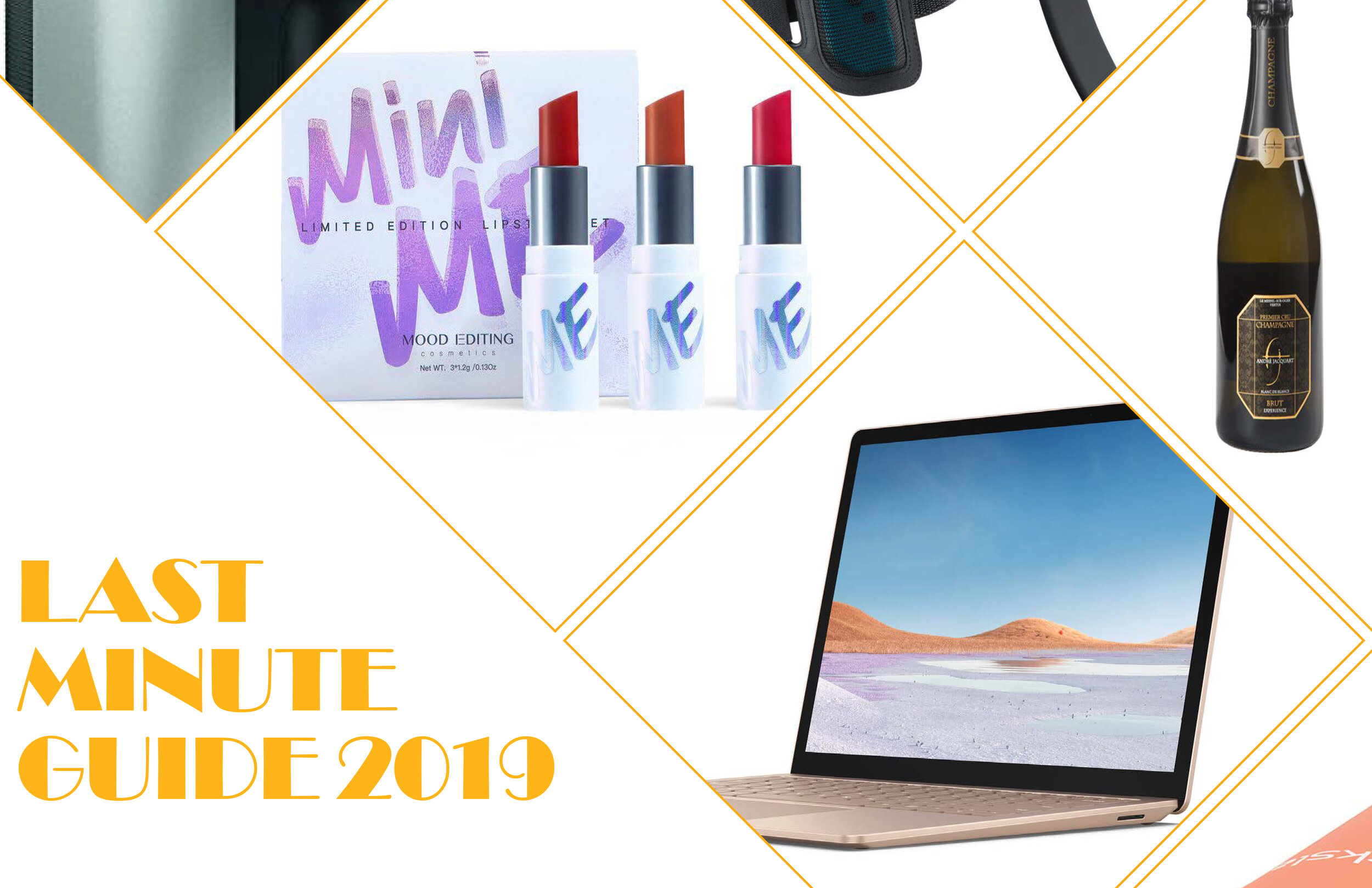

















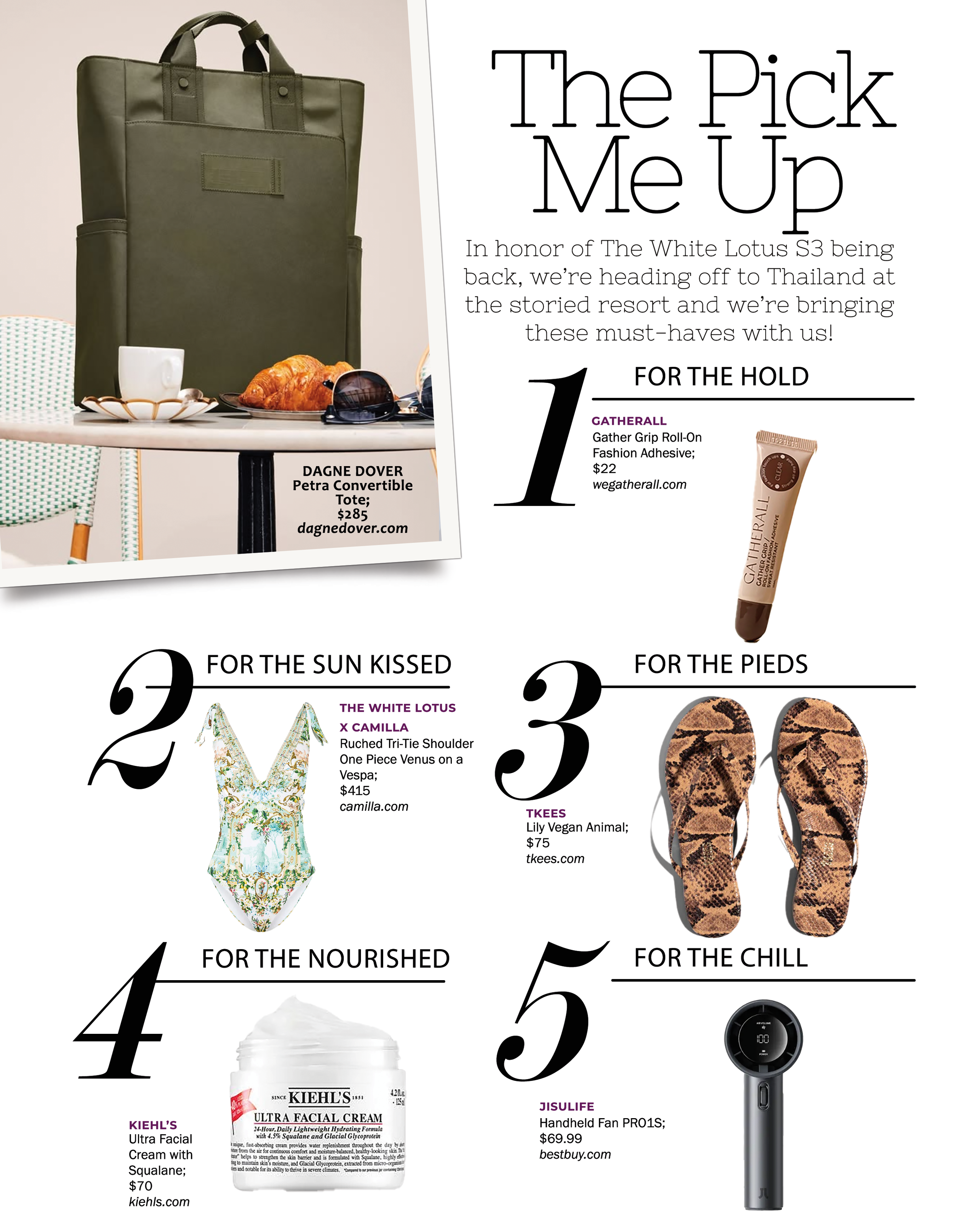

























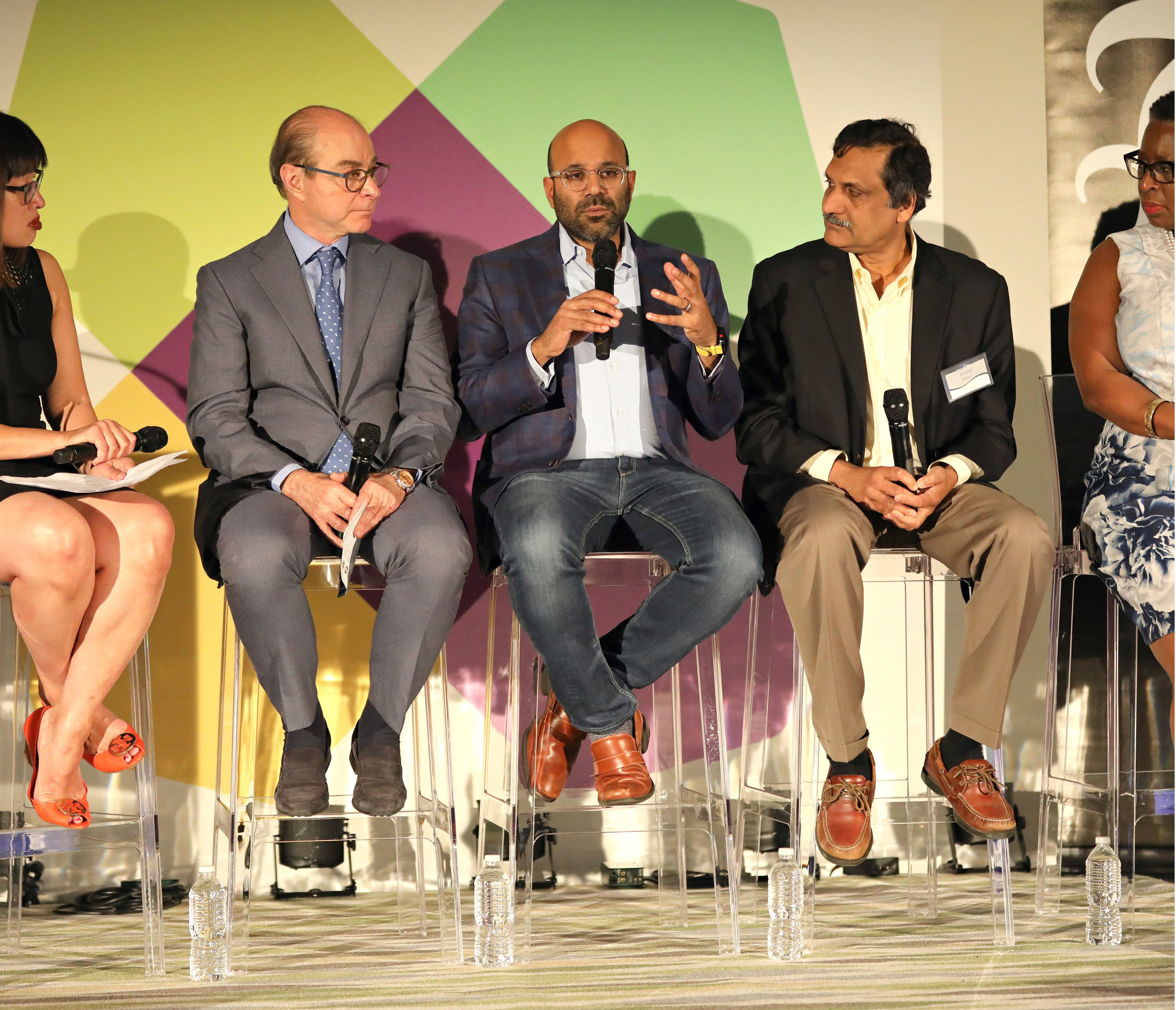



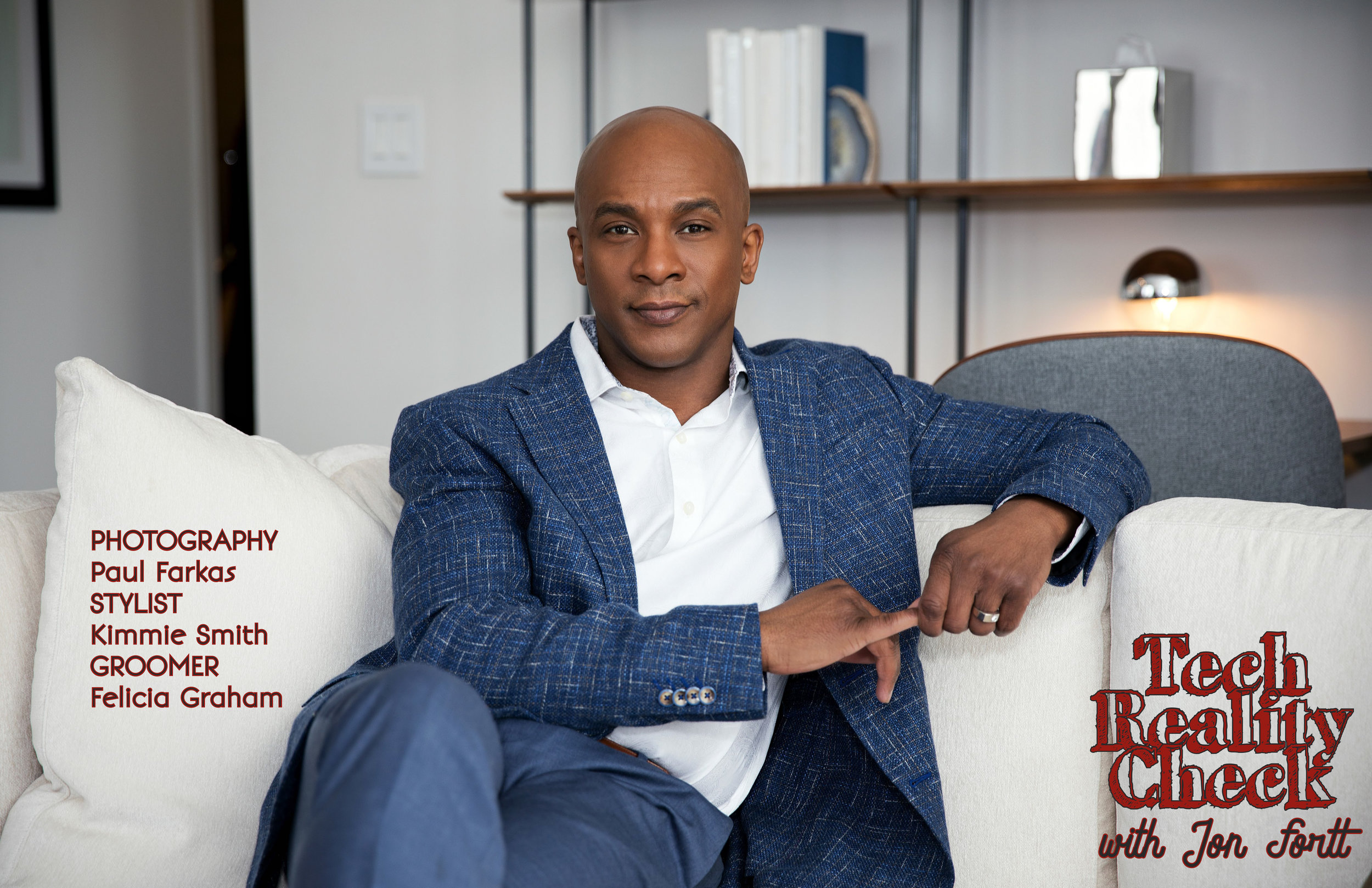



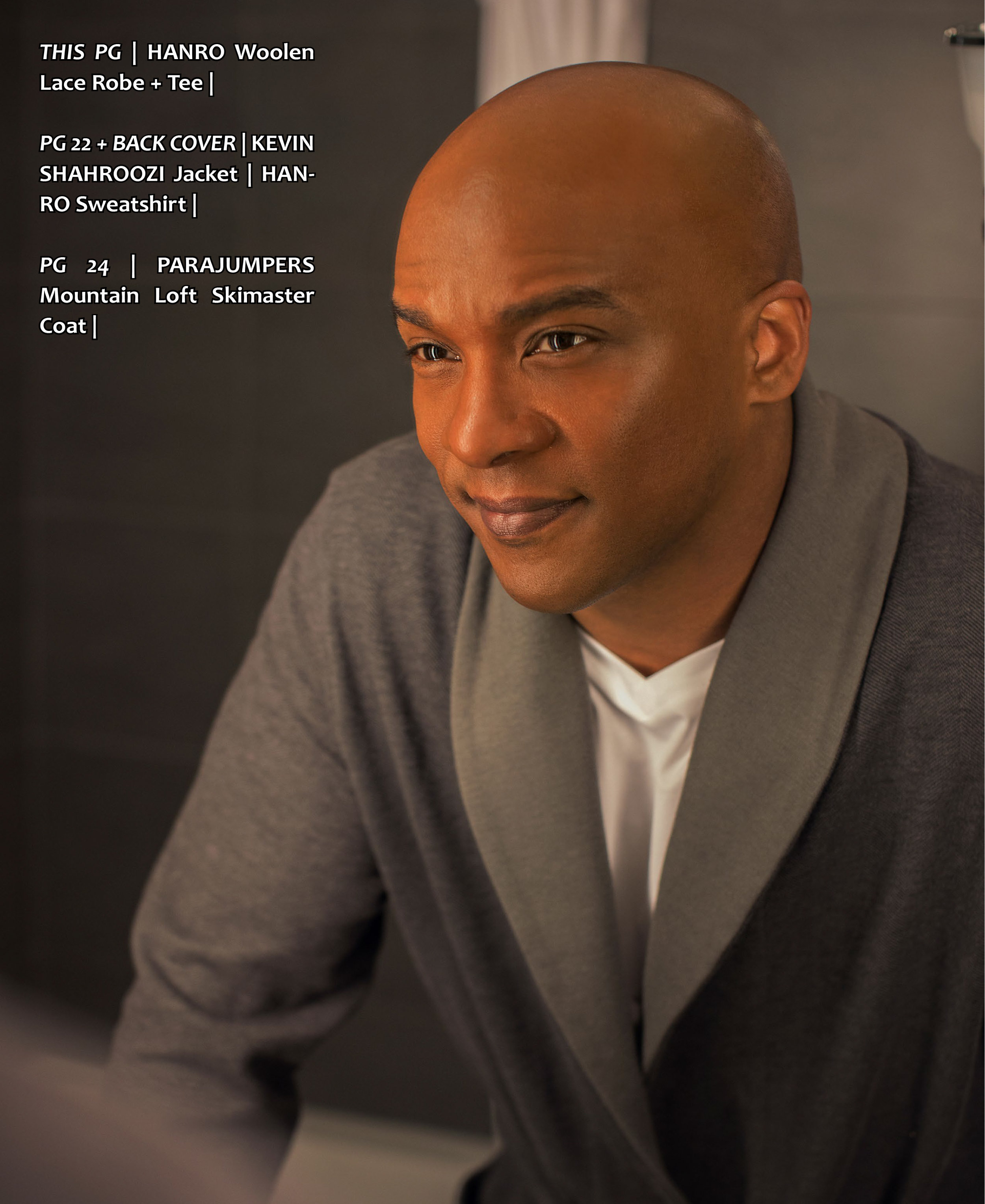
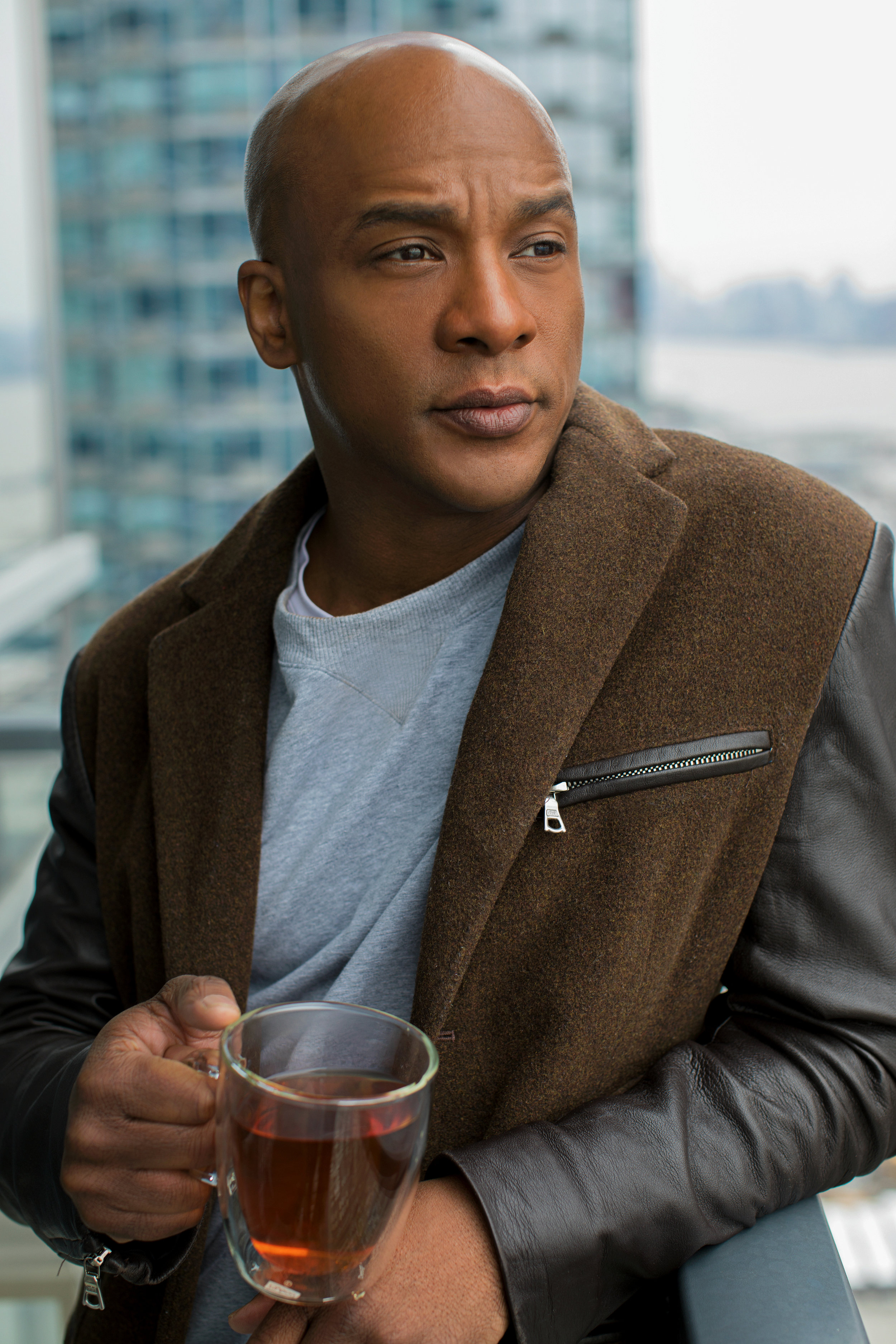














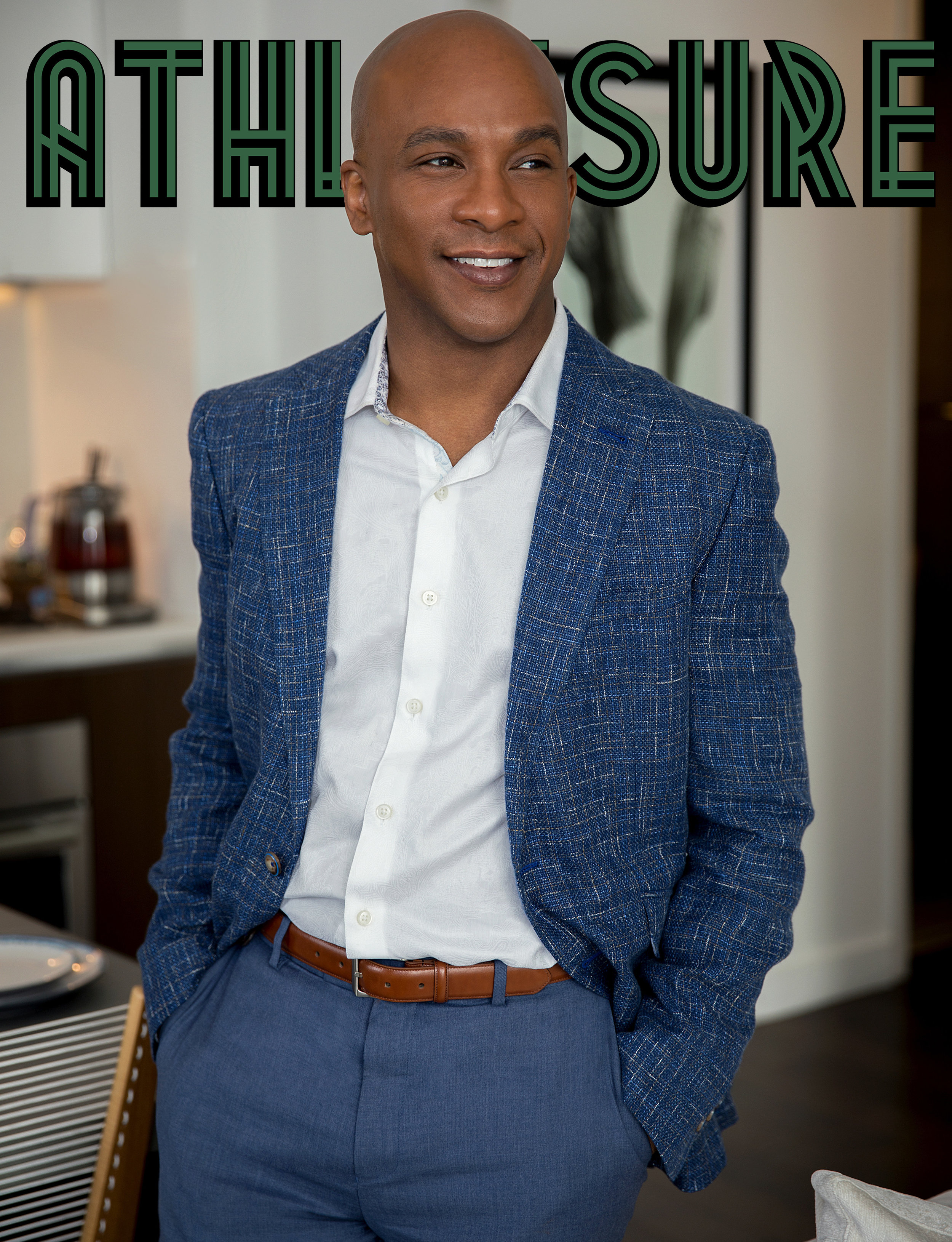









![Rapsody_Essence Party 1.26.18[3].png](https://images.squarespace-cdn.com/content/v1/55982406e4b014bac5e42764/1517619835010-ZDO53I33BQC0RL8XBKNB/Rapsody_Essence+Party+1.26.18%5B3%5D.png)
